10 Fun Things You Didn’t Know About Cendol, the Wormy Wonder of Southeast Asia
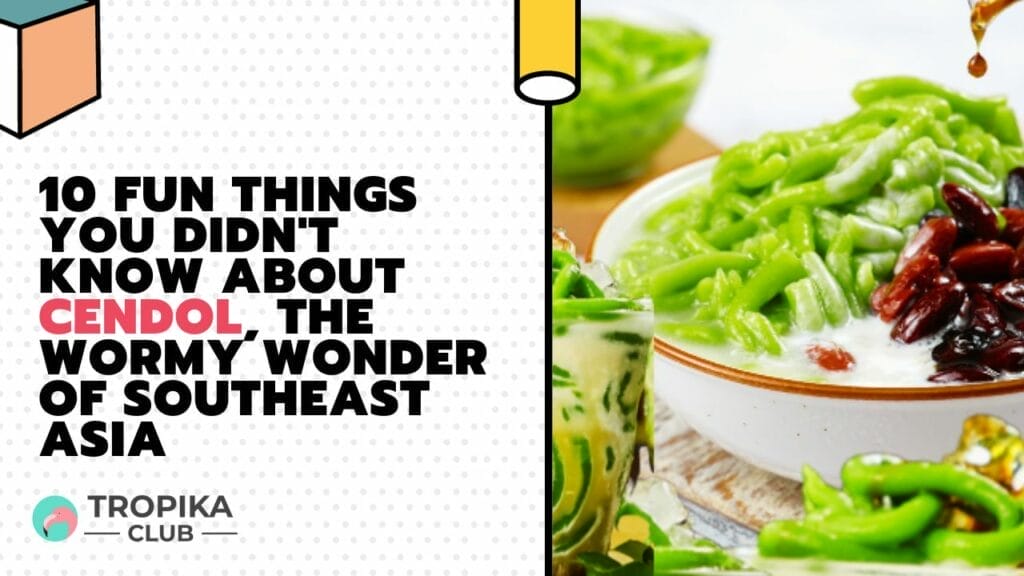
No Time to Read? Here’s a Snappy Summary of This Article
- Hidden Gems: Cendol, Southeast Asia’s famed dessert, conceals chewy, green pandan worm-like strands, adding an unexpected delight to every bite.
- Pandan Magic: Cendol’s vibrant color and unique flavor come from pandan leaves, infusing the dessert with a touch of exotic, natural sweetness.
- Culinary Evolution: Originating in Indonesia, Cendol has evolved across Southeast Asia, with each region infusing its own twist into this iconic treat.
- Ice Cold Comfort: Cendol’s popularity soars in hot climates; its ice-cold version is a refreshing, sweet respite during scorching days.
- Historical Roots: Dating back centuries, Cendol’s rich history intertwines with Southeast Asian culture, making it a symbol of tradition and culinary heritage.
Table of Contents
- No Time to Read? Here’s a Snappy Summary of This Article
- 1. The Origin Story
- 2. Cultural Significance
- 3. The Basic Ingredients
- 4. Variations Across Regions
- 5. The Art of Making Cendol
- 6. Health Benefits
- 7. Cendol in Modern Cuisine
- 8. Pairing with Other Foods
- 9. Where to Find the Best Cendol
- 10. The Future of Cendol
- Meanwhile, Check Out Tropika Club’s Ecosystem of Websites
Introduction
Cendol: the name alone evokes a sense of nostalgia and a craving for something sweet, icy, and utterly delightful. This wormy wonder of Southeast Asia has been a staple in the region for centuries, and it’s no surprise that it has found a special place in the hearts of Singaporeans. But how much do you really know about this delectable dessert? In this article, we’ll explore 10 fun facts about Cendol that will make you appreciate this treat even more. So, grab a spoon and let’s dig in!
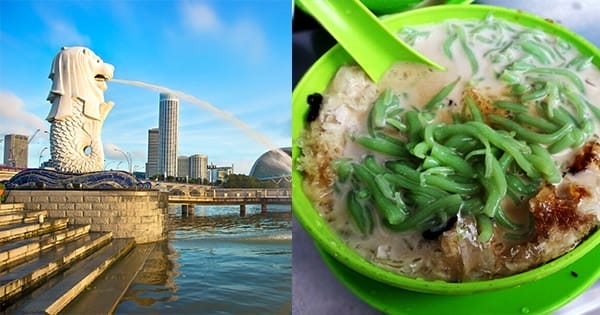
1. The Origin Story
The history of Cendol, much like the dessert itself, is a delightful mix of flavors and influences, each layer adding depth to its rich narrative. Its origins, while still a topic of friendly debate among culinary historians, are believed to trace back to Indonesia, where it is fondly known as “Dawet.” This humble dessert, with its distinctive green jelly noodles, sweet palm sugar syrup, and creamy coconut milk, began its journey here, winning over taste buds one bowl at a time. As time passed, the popularity of Cendol began to ripple outwards, reaching the shores of various Southeast Asian countries, including the vibrant city-state of Singapore. Each region it touched, it absorbed a piece of their culture, their tastes, their essence, and in return, gave them a version of Cendol that was uniquely their own. It’s a beautiful example of culinary evolution, shaped by time and geography. The name “Cendol” itself is thought to have been derived from the Javanese word “Jendol,” which translates to “bump” or “bulge,” a fitting description for the dessert’s signature worm-like green jelly. In Singapore, Cendol has become more than just a dessert; it’s a symbol of the country’s multicultural heritage, a sweet treat that tells a story of tradition, adaptation, and unity.
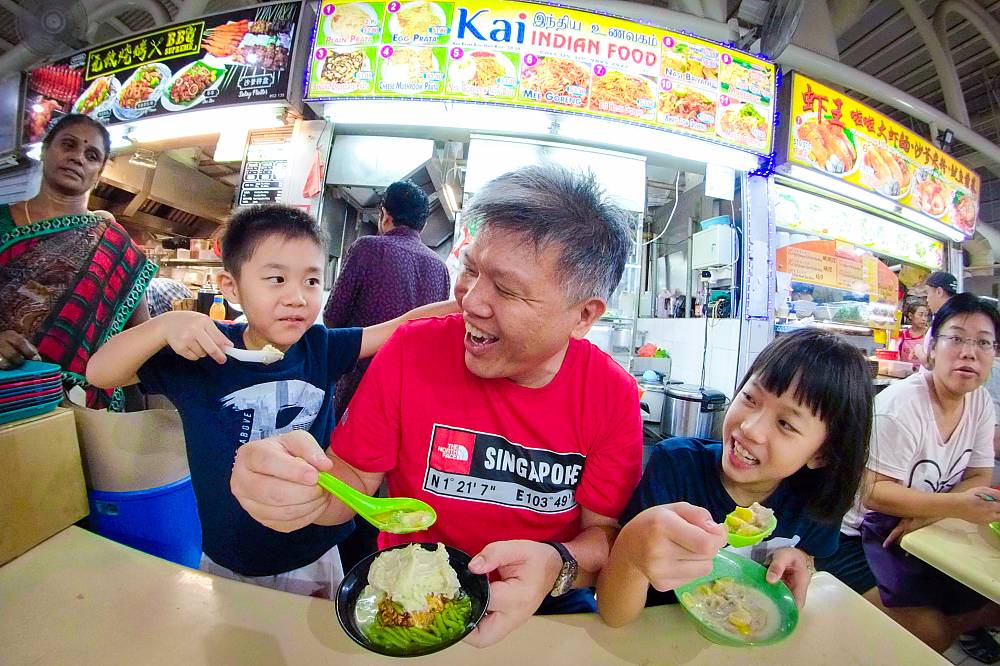
2. Cultural Significance
Cendol is not just a dessert; it’s a cultural phenomenon. In Singapore and other parts of Southeast Asia, it’s often enjoyed during festivals and special occasions. The dessert has even found its way into folklore and traditional ceremonies, symbolizing unity and communal harmony. Its cultural significance is so profound that UNESCO is considering adding it to the list of intangible cultural heritage.
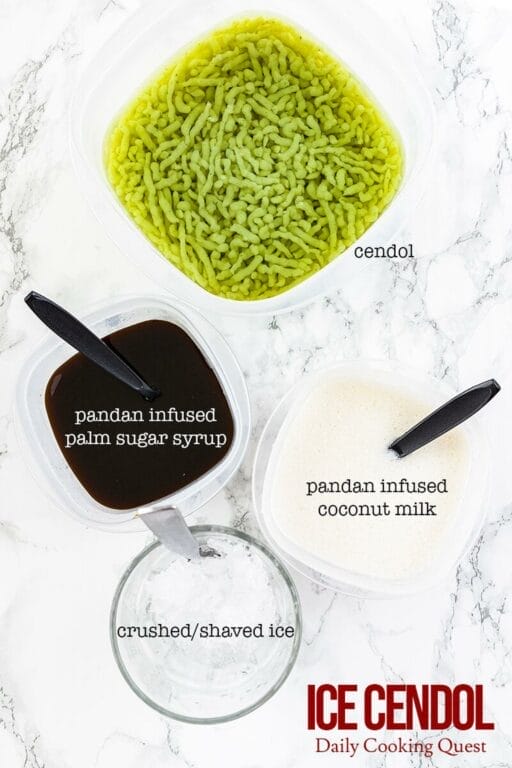
3. The Basic Ingredients
At its core, Cendol consists of pandan-flavored rice flour jelly, coconut milk, and palm sugar syrup. These ingredients are readily available in Singapore, making it a popular homemade treat. However, the simplicity of the ingredients belies the complexity of flavors and textures that make Cendol a culinary masterpiece.
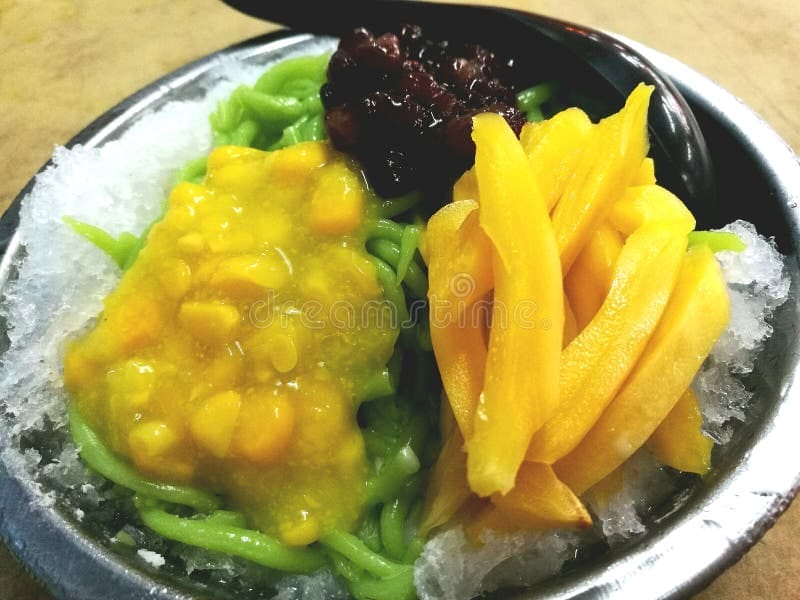
4. Variations Across Regions
Cendol may have a standard recipe, but regional variations abound. In Singapore, it’s common to find Cendol served with red beans or sweet corn. In Malaysia, you might find it with durian, while in Indonesia, it could be served with jackfruit. Each variation adds a unique flavor profile, making Cendol a versatile dessert that caters to diverse palates.
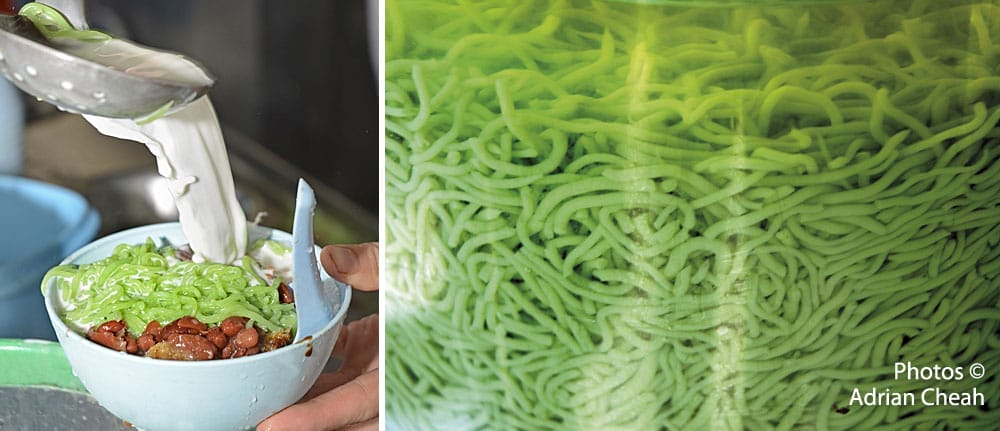
5. The Art of Making Cendol
Crafting the perfect Cendol is indeed an art form, a delicate dance of flavors and textures that requires skill, patience, and a deep understanding of its ingredients. The journey begins with the pandan-flavored jelly, the heart and soul of Cendol. The process of making it is as fascinating as the dessert itself. Rice flour dough, infused with the sweet, fragrant aroma of pandan, is pushed through a sieve into cold water. This creates the signature worm-like shape, a visual treat that adds a unique texture to the dessert. The coconut milk, another key component, must be freshly squeezed. This is a crucial step, as the freshness of the coconut milk can significantly influence the overall taste of the Cendol. It lends a creamy, rich flavor that perfectly complements the sweetness of the palm sugar. Speaking of palm sugar, it’s not just about adding sweetness. It’s about caramelizing it to perfection, a process that deepens its flavor, giving it a complex, almost smoky taste. This caramelized palm sugar syrup, when drizzled over the pandan jelly and coconut milk, ties the whole dessert together, creating a symphony of flavors that dance on the palate.
6. Health Benefits
While Cendol is often enjoyed as a sweet indulgence, it’s worth noting that this delightful dessert also offers some health benefits, making it more than just a sugary treat. The coconut milk, a key ingredient in Cendol, is rich in healthy fats and nutrients. These fats are known to be beneficial for heart health and provide a quick source of energy. Moreover, coconut milk is packed with essential nutrients like manganese, which is vital for bone health and metabolism. The palm sugar, which gives Cendol its distinctive sweetness, is not your average sugar. It contains minerals like potassium, which helps regulate fluid balance in the body, and zinc, which is essential for immune function and wound healing. This makes palm sugar a healthier alternative to regular sugar. However, while Cendol does offer these health benefits, it’s important to remember the age-old adage – moderation is key. This is especially true for those who are watching their sugar intake or managing specific dietary needs. Enjoying Cendol as an occasional treat rather than a daily indulgence can help maintain a balanced diet.
_
Read Also:
Top 10 Best Chendol In Singapore
_
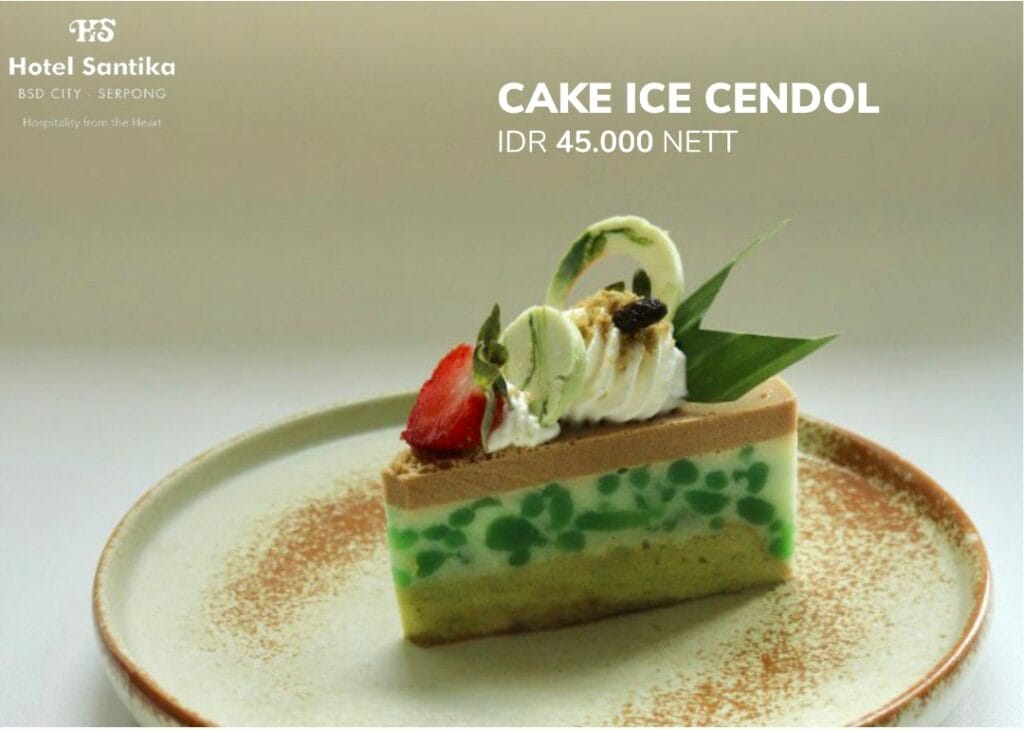
7. Cendol in Modern Cuisine
Cendol has found its way into modern Singaporean cuisine, with chefs incorporating it into cakes, ice creams, and even cocktails. These innovative takes on the classic dessert showcase its versatility and adaptability, proving that Cendol is more than just a traditional treat.
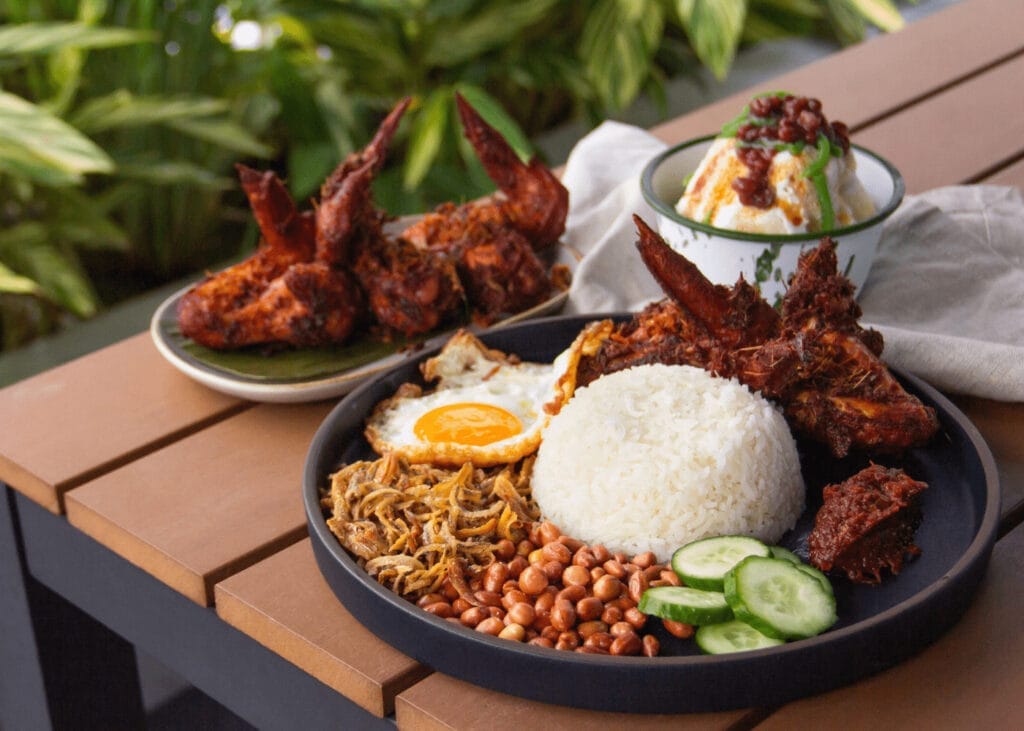
8. Pairing with Other Foods
In the vibrant city-state of Singapore, Cendol is not just a dessert, it’s an experience. Often enjoyed as a standalone treat, its sweet, creamy goodness is a joy to savor on its own. The soft, pandan-flavored jelly, the rich coconut milk, and the caramelized palm sugar come together to create a symphony of flavors that dance on the palate, making each spoonful a delight. But the beauty of Cendol lies in its versatility. It pairs wonderfully with a variety of other Southeast Asian dishes, adding a sweet note to any meal. After a spicy meal, a bowl of chilled Cendol can be the perfect way to cool down your palate. The creamy coconut milk and the sweet palm sugar provide a refreshing contrast to the heat, making it the perfect dessert to follow a fiery Laksa or a sizzling plate of Char Kway Teow. For those with a serious sweet tooth, Cendol can also be enjoyed with traditional kuehs for a full-on dessert extravaganza. Imagine ending your meal with a colorful array of kuehs, each with its unique flavor and texture, followed by a bowl of soothing Cendol. It’s a celebration of Southeast Asian flavors, a journey of taste that leaves you satisfied yet craving for more.

9. Where to Find the Best Cendol
Singapore is a haven for Cendol lovers, with numerous stalls and cafes offering their own versions of this beloved dessert. From hawker centers to upscale restaurants, you’re never too far from a delicious bowl of Cendol.
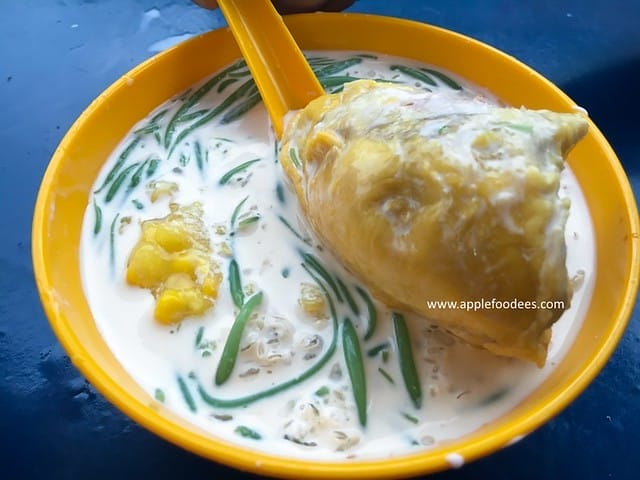
10. The Future of Cendol
As Singapore continues to evolve, so does its culinary landscape. With the younger generation showing interest in traditional foods, and chefs experimenting with new flavors, the future of Cendol looks promising. It’s a dessert that has stood the test of time, and will likely continue to do so for generations to come.
Conclusion
Cendol is not just a simple dessert that you can enjoy on a hot day; it is a reflection of the diverse and rich culture of Southeast Asia, a product of the creative and adaptive use of local ingredients, and a cherished delicacy that has won the affection of many Singaporeans. Throughout this article, we have explored the fascinating origins, variations, and meanings of Cendol, which reveal its multifaceted nature and appeal. The next time you savor a bowl of this refreshing treat, you will be able to appreciate its historical roots, cultural relevance, and gastronomic sophistication. Let’s raise our spoons to Cendol, the dessert that never ceases to amaze us!

Frequently Asked Questions (FAQ)
Q: What makes Cendol unique in Singapore?
A: Singaporean Cendol often features gula melaka, providing a distinctive local sweetness that complements the traditional pandan flavor.
Q: Where can I find the best Cendol in Singapore?
A: Check out our guide on Tropika Club for the top-rated Cendol spots in Singapore, offering authentic and innovative variations.
Q: Can I make Cendol at home?
A: Absolutely! Our blog post includes an easy Cendol recipe, allowing you to recreate this Southeast Asian delight in your kitchen.
Q: How has Cendol evolved in Singaporean cuisine?
A: Cendol has evolved in Singapore with modern interpretations, such as Cendol ice cream and Cendol-infused beverages, gaining popularity.
Q: Is Cendol suitable for vegetarians in Singapore?
A: Most Cendol places in Singapore offer vegetarian options. Look for those using coconut milk and omitting ingredients like red bean.

Have an Article to Suggest?
Tropika Club is always looking for new and exciting content to feature in their magazine and they value the input of our readers. If you have any noteworthy content or articles that you believe would be a great addition to Tropika Club’s magazine, we are open to suggestions and encourage you to reach out to us via email at [email protected]. By doing so, Tropika Club values your expertise and knowledge in the matter and appreciates your willingness to help. We will review your recommendations and update our list accordingly
Meanwhile, Check Out Tropika Club’s Ecosystem of Websites
Tropika Club Magazine – Tropika Club Magazine is a Singapore-based publication that features articles on a wide range of topics with a focus on local businesses and content for the region. The magazine emphasizes supporting local businesses through its #SupportLocal initiative, which includes coverage of everything from neighborhood hawker stalls to aesthetic clinics in town. In addition to highlighting local businesses, Tropika Club Magazine also covers a variety of local content, including beauty, lifestyle, places, eats, and what’s on in Singapore and the Asia Pacific region.



